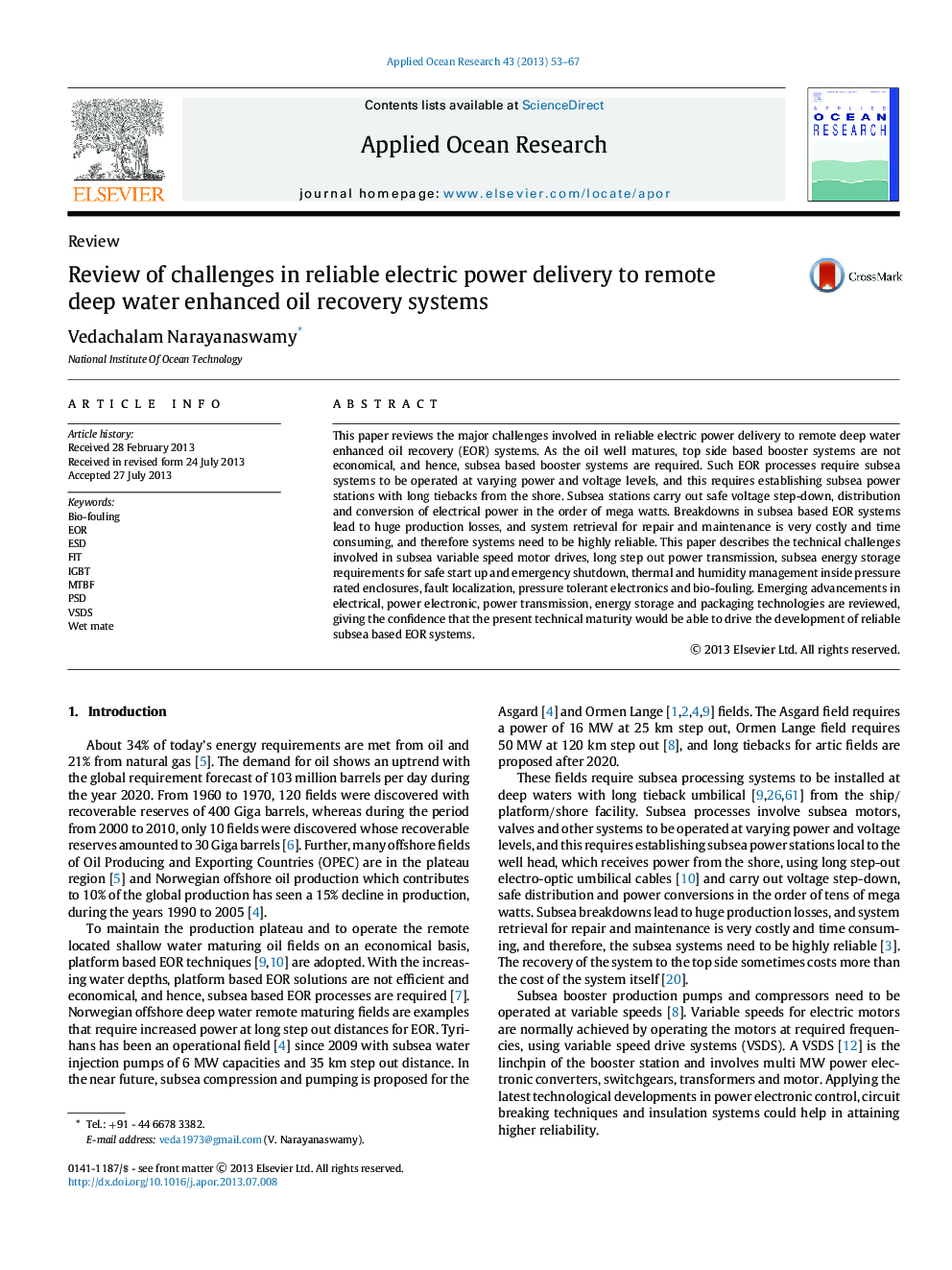| Article ID | Journal | Published Year | Pages | File Type |
|---|---|---|---|---|
| 1720109 | Applied Ocean Research | 2013 | 15 Pages |
•We review present technical maturity in development of subsea based EOR systems.•With latest power electronic technology, an MTBF more than 5.6 years can be achieved.•Subsea UPS backup helps in attaining SIL3 protection for emergency shutdown systems.•In multi-module subsea system, precise fault localization techniques are explained.•Advantages of pressure compensation and bio-fouling avoidance are explained.
This paper reviews the major challenges involved in reliable electric power delivery to remote deep water enhanced oil recovery (EOR) systems. As the oil well matures, top side based booster systems are not economical, and hence, subsea based booster systems are required. Such EOR processes require subsea systems to be operated at varying power and voltage levels, and this requires establishing subsea power stations with long tiebacks from the shore. Subsea stations carry out safe voltage step-down, distribution and conversion of electrical power in the order of mega watts. Breakdowns in subsea based EOR systems lead to huge production losses, and system retrieval for repair and maintenance is very costly and time consuming, and therefore systems need to be highly reliable. This paper describes the technical challenges involved in subsea variable speed motor drives, long step out power transmission, subsea energy storage requirements for safe start up and emergency shutdown, thermal and humidity management inside pressure rated enclosures, fault localization, pressure tolerant electronics and bio-fouling. Emerging advancements in electrical, power electronic, power transmission, energy storage and packaging technologies are reviewed, giving the confidence that the present technical maturity would be able to drive the development of reliable subsea based EOR systems.
